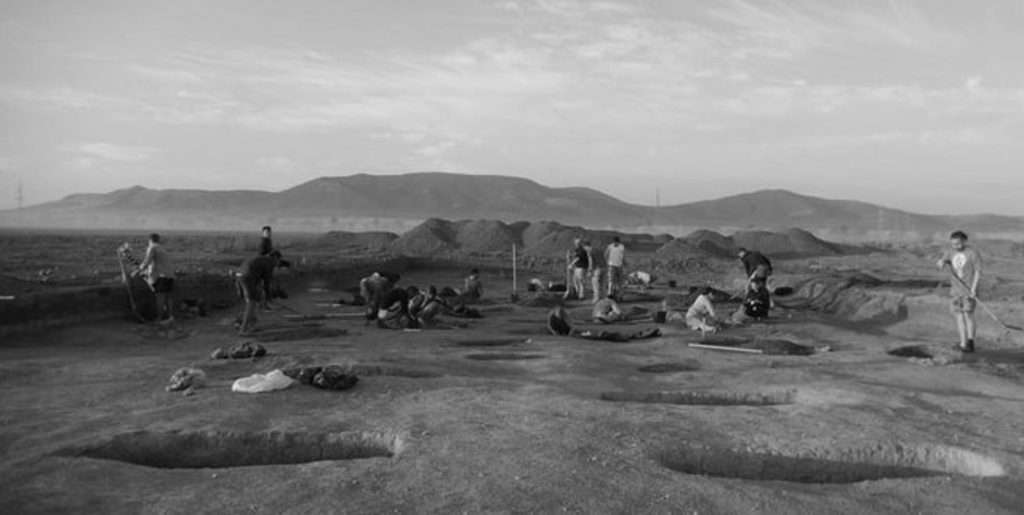A mammoth bone carved into an arrowhead-like dagger has been discovered at a 23,000-year-old sacrificial site.
The discovery was made at the site in Bryansk in the Russian Bryansk Oblast region where it was once holy ground for ancient man who would take the bodies of not just mammoths but also other animals killed in the region such as cave lions and huge bears.

Also found have been works of art confirming the religious nature of the site, including a Palaeolithic Venus-like figure, flint clusters and other artwork.
It is believed that the successful hunters were expected to make sacrifices in order to honour the bodies of the animals that they killed, and to ensure that the animals would be reborn to continue the circle of life.
Russian scientists, led by the head of the Khelevka archaeological expedition, Konstantin Gavrilov, said that alongside the holy ground when it was clear the ancients had lit fires and carried out religious rights there was also signs of a settlement dating back some 23,000 years – and possibly even further.

Gavrilov said: “From the ethnographic materials we have been able to piece together the rituals accompanied the celebration of a successful hunt. The hunter who killed the beast had to make a sacrifice in order to appease the spirit of the animal and ensure its continuation. Perhaps it was here that similar rites were held, which were accompanied by ritual holidays – this is evidenced by the numerous animal bones and large accumulations of coal.”
During this period, the last glaciers in Europe would have already retreated to the north and covered only the Scandinavian peninsula and the Baltic region. The plain where the holy ground was located was covered with forest-steppes, and would have been home to mammoths, reindeer, brown bears and cave lions.

Details of the find at the Palaeolithic site, identified as Khotylevo-2, were made public this week during a press conference organised at the Institute of Archaeology of the Russian Academy of Sciences (RAS).
In the latest research, the scientists believe they have identified the centre of the holy ground where a huge fire would have been burning.
They were most excited though by the discovery of the 16-centimetre (6.2-inch) dagger. It has a long narrow body and an asymmetric inscription. It was made from mammoth bone and has been carved with inscriptions.
To find out more about the author, editor or agency that supplied this story – please click below.
Story By: Elena Kalioglo, Sub-Editor: Joseph Golder, Agency: Central European News
The Ananova page is created by and dedicated to professional, independent freelance journalists. It is a place for us to showcase our work. When our news is sold to our media partners, we will include the link here.




